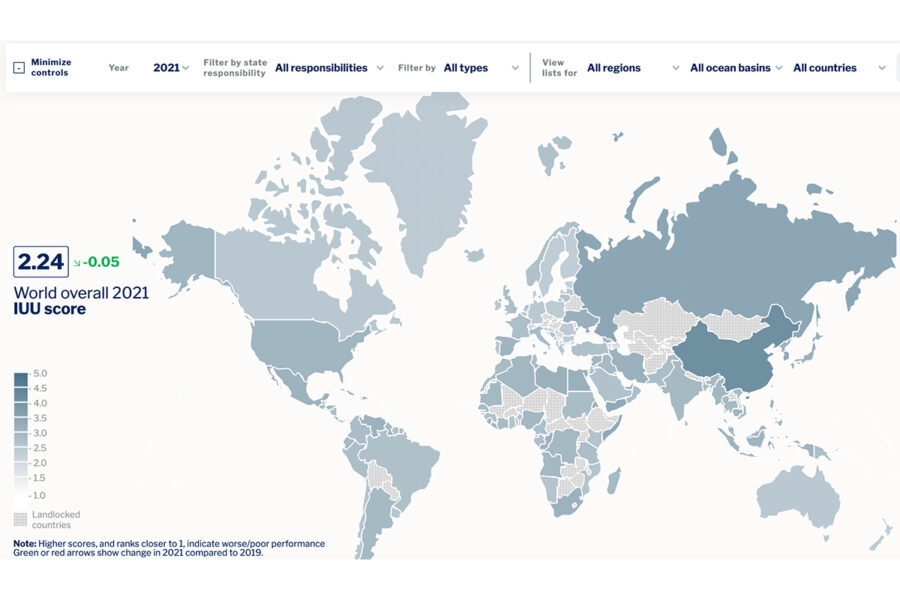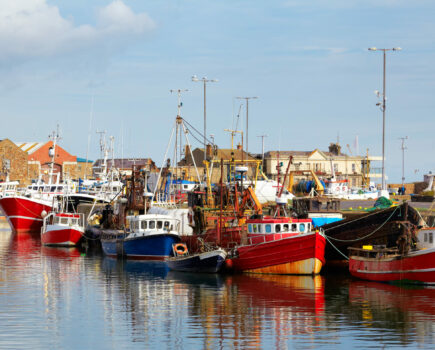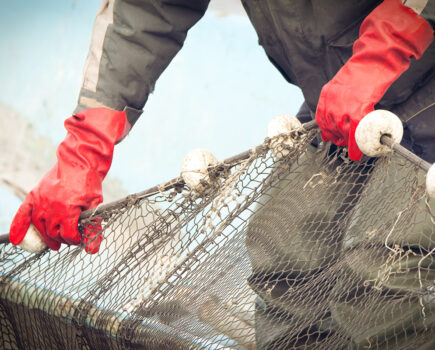Environmental NGO Oceana released a factsheet last week detailing how the international community could respond to IUU fishing by Russia, recently rated as the number two illegal fishing nation in the world after China, reports Andy Read.
The factsheet is part of a detailed report published by UK fisheries consultants Poseidon Aquatic Resource Management.
Available at iuufishingindex.net, it allows countries to be benchmarked and ranked, and assessed for their vulnerability, prevalence and response to IUU fishing. Russia is assessed as number two, with a huge number of transhipments at sea – notorious for their high risk – within the Russian EEZ, both of pelagic fish and whitefish.
Much of this subsequently enters UK and EU markets, often after reprocessing in countries such as China. The fish is often also relabelled, making an informed consumer choice to avoid Russian fish extremely difficult.
The Oceana factsheet uses AIS data collated by Global Fishing Watch, the UK-based organisation set up by the NGO in 2015, in partnership with Google. Suggesting that greater amounts of IUU Russian-caught whitefish are likely to enter western markets through third countries, to avoid any sanctions, the NGO instead documents how denial of third- country access could support the fight against Russian IUU fish entering international markets.
Russia now maintains a fleet of more than 1,000 commercial fishing vessels worldwide that use trawl nets, longlines, pots, traps and gill-nets, according to Oceana. They spent nearly five million hours fishing within Russia’s EEZ between 2019 and 2021.
However, the factsheet confirms that Russian vessels also spent 550,000 hours fishing in the Norwegian EEZ, 283,992 hours in Japanese waters, 54,432 hours in Danish waters and 33,211 hours in Mauritanian waters.
There were nearly 2,000 instances of Russian fishing vessels entering the ports of Busan and Donghae in South Korea between 2019 and 2021, and over 1,900 visits to the Norwegian ports of Kirkenes, Tromso and Batsfjord. Other ports that were popular for Russian fishing vessels included Hanasaki in Japan (431 visits), Bellsund in the Norwegian archipelago of Svalbard (385) and Toftir in Faroe (375).
“Oceana’s analysis reveals that Russian fishing vessels have access to ports and fishing authorisations across the globe,” said Dr Marla Valentine, illegal fishing and transparency campaign manager at Oceana.
“Withdrawing port access, denying fishing rights and banning imports can be powerful sanctions in addition to banning seafood from Russia. The countries identified in Oceana’s analysis, especially those most frequented by Russian vessels, should decide whether Russia’s actions in Ukraine warrant the continued privilege of port access or fishing in their waters.
“For any ban on Russian seafood to be effective, there must be boat-to-plate traceability for all seafood.”
This story was taken from the latest issue of Fishing News. For more up-to-date and in-depth reports on the UK and Irish commercial fishing sector, subscribe to Fishing News here or buy the latest single issue for just £3.30 here.








